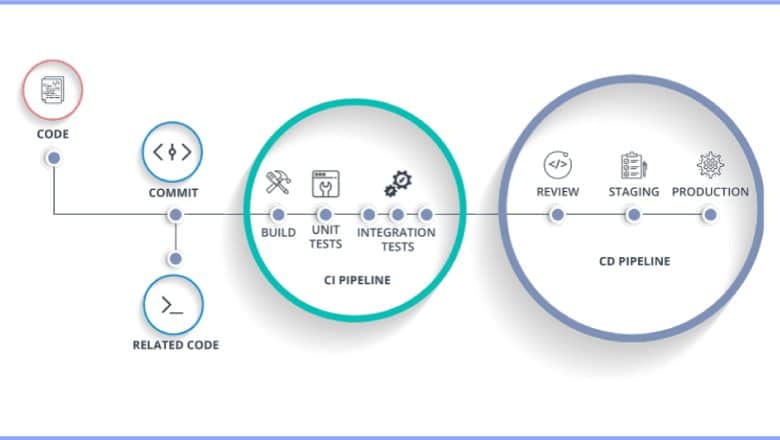
In today’s rapidly evolving digital landscape, software intelligence and CI/CD pipelines have emerged as two powerful tools reshaping how organizations build, test, and deliver software. From startups to enterprise-level corporations, the need to deliver quality software at speed is more critical than ever. As organizations strive to stay competitive, the integration of smart analytics into continuous integration and continuous delivery (CI/CD) pipelines enables a level of agility, accuracy, and efficiency previously unimagined.
Interestingly, the same logic of intelligent automation is applied even in industries outside software—like tracking datasets to learn how many restaurants in the US for marketing, planning, and logistics optimization. Smart tools make all industries better—and software engineering is no exception.
What Is Software Intelligence?
Software intelligence refers to the use of automated systems and data analytics to monitor, evaluate, and improve software systems. It combines artificial intelligence, machine learning, and advanced algorithms to analyze software performance, security vulnerabilities, code quality, and user behavior. This real-time insight allows teams to make informed decisions, optimize processes, and prevent failures before they occur.
Think of it like the “brain” behind your code—it understands what’s going on, spots anomalies, and recommends actions. When integrated with CI/CD pipelines, software intelligence transforms the entire software development lifecycle.
Understanding CI/CD Pipelines
CI/CD stands for Continuous Integration and Continuous Delivery/Deployment. It is a methodology that allows software developers to integrate code changes frequently, automatically test them, and deploy them to production environments with minimal manual intervention.
- Continuous Integration (CI): Developers merge code changes frequently into a shared repository. Automated builds and tests run to validate these changes.
- Continuous Delivery (CD): Ensures that code is always in a deployable state. Code passes through automated testing and staging before final deployment.
- Continuous Deployment: Goes a step further by automatically deploying every change that passes testing directly to production.
CI/CD pipelines are like high-speed assembly lines for code—automated, repeatable, and fast.
The Symbiotic Relationship Between Software Intelligence and CI/CD
On their own, CI/CD pipelines automate the deployment process. But when paired with software intelligence, they become smarter. Here’s how the integration plays out:
1. Predictive Code Quality
By integrating software intelligence tools into CI workflows, developers receive real-time feedback on code quality. Machine learning algorithms can predict if new code changes will introduce bugs based on past trends and code patterns. This proactive approach drastically reduces the number of issues that make it to production.
2. Smarter Testing and Test Prioritization
Software intelligence allows for smart test selection. Instead of running the entire suite of tests every time, AI determines which tests are most likely to be affected by recent code changes. This reduces feedback cycles and increases CI efficiency.
3. Risk Assessment and Impact Analysis
CI/CD systems embedded with software intelligence can identify which parts of the application are at the highest risk after a code change. This facilitates targeted testing and faster incident resolution, making it a key asset for DevOps teams.
Real-Time Monitoring and Feedback Loops
Another major benefit is real-time monitoring. Software intelligence platforms collect telemetry data from applications in production and feed it back into the pipeline. This enables a closed-loop feedback system, where runtime data informs development decisions.
This means if a deployed feature starts behaving unexpectedly or slows down user experience, the issue is immediately detected and rolled back, or a hotfix is triggered automatically.
Efficiency Gains and Cost Reduction
By incorporating software intelligence into CI/CD:
- Teams catch bugs earlier, reducing the cost of late-stage fixes.
- Developers spend less time debugging and more time building features.
- Operations become more predictable, reducing downtime.
In sectors where data is king—like tracking how many restaurants in the US for economic trends or food delivery optimization—such efficiencies can be the difference between success and failure.
Use Cases in Modern Development Environments
Let’s dive into some real-world scenarios where software intelligence and CI/CD pipelines combine to deliver exceptional results.
A. E-Commerce Platforms
In e-commerce, performance and reliability are paramount. Companies use intelligent pipelines to:
- Automatically test shopping cart functionality after every code push.
- Monitor server response times in real-time.
- Analyze customer behavior to tailor future updates.
B. Financial Services
Financial apps handle sensitive data and require airtight security. Software intelligence helps:
- Detect vulnerabilities early using static and dynamic analysis.
- Predict impact of changes on compliance and regulations.
- Automatically rollback updates that could affect transaction integrity.
C. Healthcare Applications
In healthcare, software must be compliant, secure, and stable. Intelligent CI/CD ensures:
- Updates go through rigorous automated compliance testing.
- Real-time usage analytics guide future development.
- Minimal downtime thanks to predictive monitoring.
Building an Intelligent CI/CD Pipeline
So, how do you go about building such a smart system? Here are key components:
1. Tool Integration
You’ll need tools that support automation and intelligence. Popular ones include:
- Jenkins, GitLab CI, or GitHub Actions for orchestration.
- SonarQube for code quality analysis.
- Dynatrace or New Relic for application performance monitoring.
- Snyk, Checkmarx for security scanning.
2. Automated Testing with AI
Add tools that enable smart test selection, like Test.ai or Functionize, which use AI to analyze your codebase and usage patterns to focus tests where they’re most needed.
3. Continuous Monitoring
Monitoring platforms gather telemetry from apps in production. They analyze trends and anomalies, which can then trigger alerts or even pipeline re-runs.
4. Feedback Channels
Ensure developers have access to dashboards and alerts so they can act on insights immediately. Tools like Slack or Microsoft Teams integrated with your CI/CD system can help.
Challenges and Considerations
Of course, no system is without its challenges:
- Data Overload: Software intelligence platforms produce a lot of data. Filtering meaningful insights is essential.
- False Positives: Not all AI predictions are accurate. Teams must validate automated suggestions.
- Security Concerns: Integrating multiple tools into a pipeline increases the attack surface.
- Cultural Shift: Teams must adopt a mindset of continuous learning and automation.
Success lies in gradual implementation, continuous training, and aligning development goals with business objectives.
The Future of Software Development Is Intelligent
The future lies in autonomous pipelines—systems that not only build and test code but also analyze, make decisions, and deploy with minimal human intervention. With software intelligence woven deeply into CI/CD pipelines, we can expect:
- Near-zero downtime releases
- Proactive bug prevention
- Accelerated development cycles
- Enhanced user experience through real-time feedback
As industries across the board—from food to fintech—leverage smart data to stay ahead, the same principles applied to software development can drive immense value.
Final Thoughts
Software intelligence and CI/CD pipelines are no longer just “nice to have”—they are essential for modern development. By embedding intelligence into automation, teams create systems that are not only faster but also more accurate, adaptive, and resilient.




